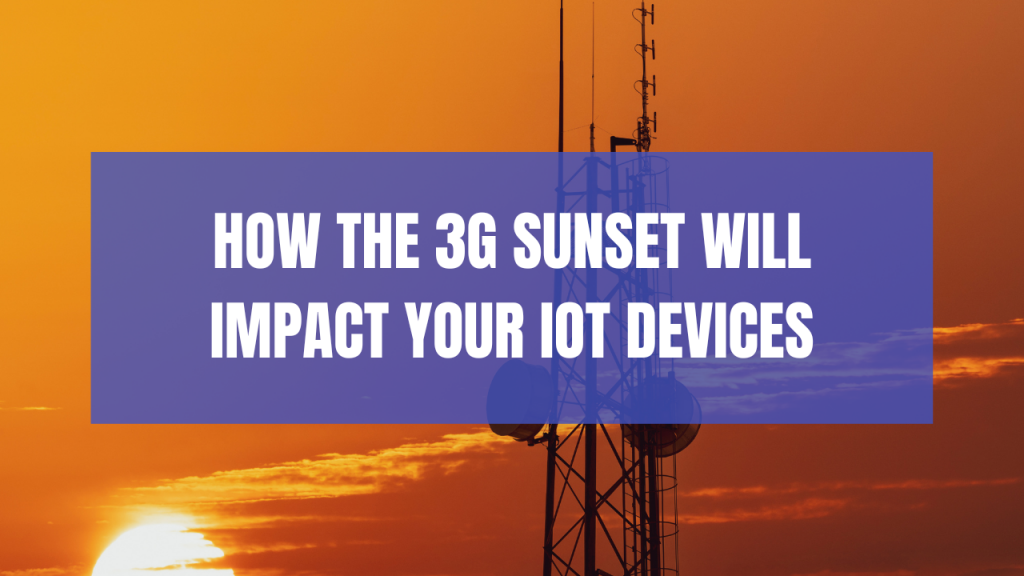
As technology advances, we find ourselves bidding farewell to an era that has been pivotal in linking our gadgets. The impending shutdown of 3G networks is triggering a ripple effect across the Internet of Things (IoT) landscape, affecting more than half of all IoT devices according to a report published by James Brehm & Associates.
Many networks are opting to phase out 3G networks earlier than the government’s agreed-upon deadline of 2033, and some have already completed the switch. This situation prompts businesses to take action to guarantee the connectivity of their IoT devices.
Below, we explore the impact of the 3G switch-off on IoT devices, and dive into how businesses can leverage IoT SIMs to ensure a smooth transition and enhance the security and efficiency of their IoT infrastructure.
The 3G Sunset and Its Implications
As telecommunication providers phase out 3G networks to make way for faster and more advanced technologies like 4G and 5G, IoT devices relying on 3G connectivity face the risk of becoming outdated. Security alarms, thermostats, and emergency response systems, which have been pivotal in ensuring our safety and comfort, become vulnerable to this transition. Despite the challenges posed by the 3G sunset, there are several connectivity options for IoT devices that can be upgraded or replaced.
Security Alarms
Security alarms have long been the first line of defence for homes and businesses. Many of these systems rely on 3G connectivity to communicate alerts and notifications to monitoring centres. With the impending 3G shutdown, there is a pressing need for upgrading these systems to ensure they remain effective in safeguarding our premises.
The solution:
To ensure that your security system is not affected by the sunsetting of 3G, you should carry out a check to see what connection it uses. For enhanced reliability and connectivity, it is strongly recommended to upgrade your alarm system to a minimum of 4G, equipped with an IoT SIM, especially if it currently operates on 2G or 3G.
Thermostats
Smart thermostats have revolutionised the way we manage energy consumption in our homes and businesses. Many of these devices rely on 3G connectivity to receive updates, patches, and user preferences. The 3G sunset poses a challenge to the seamless operation of these thermostats.
The solution:
As mentioned above, check the mode your smart thermostat uses to connect and upgrade it to 4G or 5G to ensure longevity and forward compatibility. By integrating IoT SIMs, businesses can ensure that their heating, ventilation, and air conditioning (HVAC) systems remain connected, allowing for remote monitoring and control, ultimately optimising energy efficiency.
Emergency Response Systems
Emergency response systems, including medical alert devices and panic buttons, are critical in ensuring rapid assistance during emergency situations. They often rely on 3G connectivity to relay urgent signals to response centres. The pending 3G switch-off poses a risk to the reliability of these life-saving systems – those out of date could leave many in a very dangerous situation.
The solution:
From our experience, many such devices are only 2G and 3G. Given the critical nature of the use case, it’s imperative that each Emergency Response System device is checked to ensure it is 4G and 5G compatible. If not, start to change them out immediately so that critical services and systems are not interrupted.
The 3G switch-off is a wake-up call for businesses to take a closer look at and strengthen their IoT infrastructure. This transition is not merely about overcoming challenges posed by 3G; it presents an opportunity to enhance security, reliability, and efficiency of our devices. This includes upgrading equipment, embracing IoT SIMs and regular maintenance and updates.
As we bid farewell to 3G, the transition to IoT connectivity is a strategic move that not only safeguards businesses from potential disruptions but also lays the foundation for a connected future. Why not take a look at our range of IoT SIMs here and explore this transformative journey.
No Comments yet!